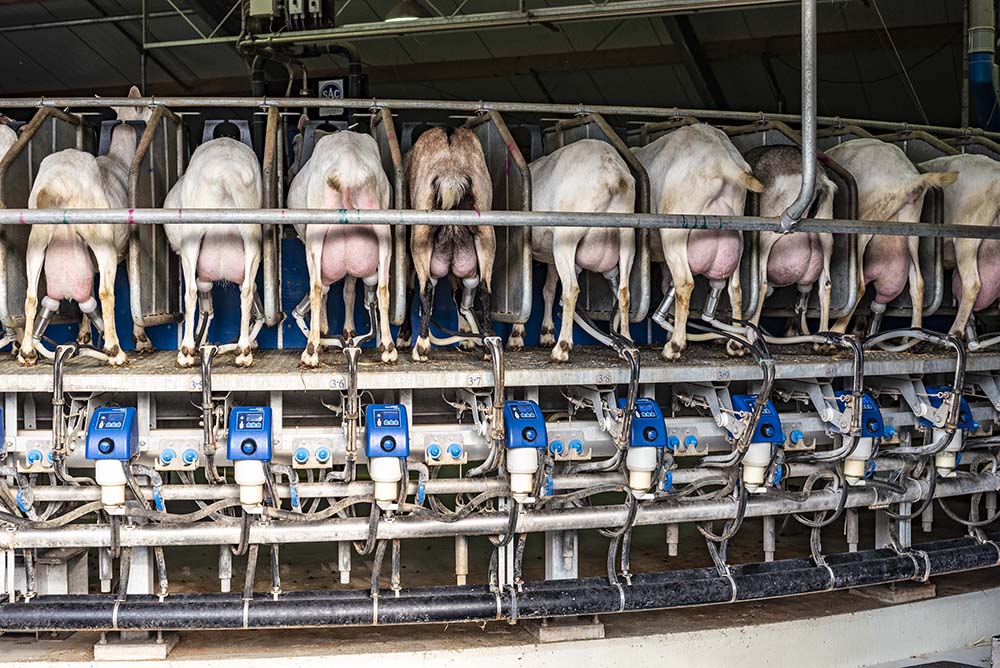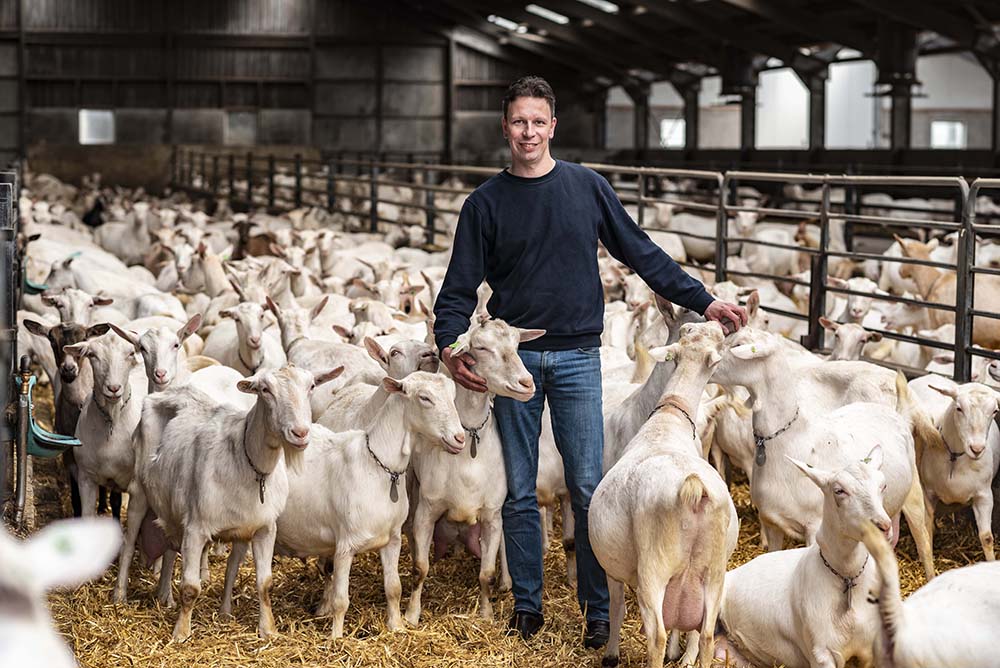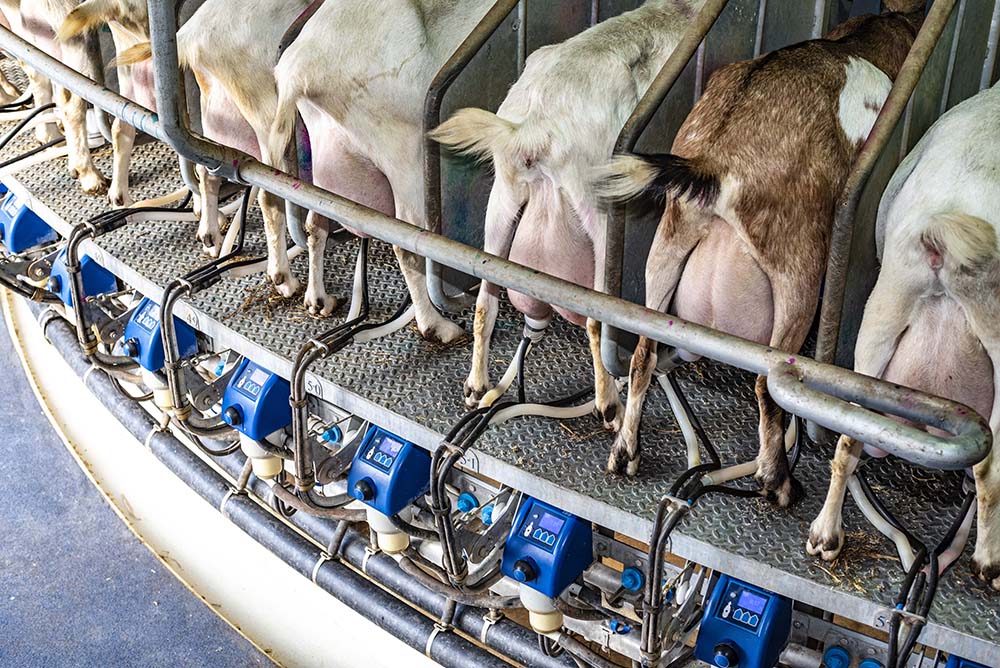At work
‘We would choose this parlour again’
A simple system, with high capacity and very user-friendly. Dennis, his parents Reint and Annie and his wife Hilde Roekevisch choose a 90-stand SAC external rotary for their goats four years ago. With milk measurement, separation and an adjustable pit floor. ‘We would build it exactly the same again.
More control, increased production, reduced costs
There is always a lot going on in the yard of the Roekevisch family. They have a dairy goat farm, but also a farm campsite, transport companies and are a very popular internship destination. We milk with seven different milkers,' says Dennis Roekevisch, who himself milks the goats at least once a day in their 90-stand external rotary. 'The milking parlour has an adjustable pit floor, so everyone works at the working position,' he says about the milking parlour installed in 2016. The milk measurement system provides ease of work and efficiency. Is a goat below its expected milk yield, then she is allowed to take an extra turn in the rotary. If the goats need to be separated or to change groups, that is done with only one push at the button. The milk production of the goats – is now 1200 litres per goat per year - which is accurately monitored thanks to milk measurements, and the amount of concentrates are adjusted accordingly. This provides a source of information that Dennis can use to better manage his goats. ‘I have more control. Production of milk has increased and the cost price per litre of milk has decreased.’
20 years of experience with dairy goats
The Roekevisch family has been milking goats for over 20 years now. Before that, they had a pig farm with outdated stables. ‘We had to invest to be able to meet environmental and welfare requirements’, summarises Dennis. A future for the then recently graduated HAS student was not really a part of the future to get involved in his parents' farm. That was a business case for goats, which opened the eyes for the future possibilities to earn money. ‘We did not need a quota for milk production, we could just start-up at once,’ says Dennis. ‘The only thing we had to work with was a production licence and financing of the project, but that was really not a problem. ‘We also succeeded in selling the milk: we got a delivery contract with CBM without any restrictions.’ They drew up a plan for initially 450 dairy goats and started milking in a very simple 2 x 32 side-by-side milking parlour, with 32 milk stands swingover. ‘Soon we started to get more goats’, Dennis recalls. From 600 goats the herd doubled to more than 1300 goats in 2009. The stable was extended, but the milking parlour also had to grow, too. It was upgraded to a 2 x 40 milking parlour, with 80 clusters and automatic cluster removers. ‘I always did the maintenance of the parlour myself’, says Dennis. ‘I like a simple milking parlour.’ But eventually, they were also milking the goats in this barn twice a day for 4.5 hours with two people. ‘That became too much.’
Switching to external rotary
Sixteen years after they started their goat farm, the 90-stand external rotary was installed. ‘We went to a farm to experience a SAC external rotary together with SAC and that was so fantastic’, Hilde says. ‘It is a simple and yet very efficient system with few moving parts’, adds Dennis. ‘That is exactly what we were looking for’. They also considered a large side-by-side. ‘But the is always turning, so you can keep-up the flow of goats, while you doing the work of milking from same.’
A new building with the external rotary for goats and a lot of lights through the door and windows make sure, that the working environment is very pleasant. ‘All parts of the rotary for maintenance and service are here on the farm,’ says Dennis, who still making repairs the rotary himself and, together with the SAC service technician, does the maintenance. ‘I hate when milking is interrupted by malfunctions, now I can almost always fix it myself.’
Milking time, three hours
The 1750 goats are split in six production groups and are now milked twice a day - in three hours per milking, say Dennis and Hilde. Both milking is the most pleasant. One can milk, the other takes care of the flow of goats to the rotary, changes the groups of goats and helps out where needed', they explain. ‘This is working fantastic on our farm and for us happy life.’




